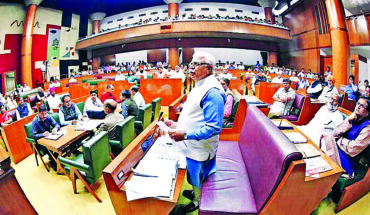The latest release of GDP data by the National Statistical Office indicates a further deceleration in growth for the October-December 2022 quarter. Gross domestic product expanded by 4.4 per cent from the year-earlier quarter, lagging the 5.2 per cent growth of the October-December 2021 period. Gross Value-Added growth slowed to 4.6 per cent, as manufacturing continued to contract, albeit at a narrower pace than in the previous quarter. Growth in three of the five services sectors also slowed sharply from the second quarter, signalling a waning of pent-up demand. Private final consumption expenditure lost momentum, with its percentage share of overall GDP easing to 61.6 per cent, from 63 per cent in the year-earlier quarter. This happened during the traditional festival quarter when consumption spending usually peaks, which suggests that the relentless pace of retail inflation is eroding consumptive capacity. The Chief Economic Adviser (CEA) has suggested that if the year-earlier manufacturing output data had remained unrevised, the sector would have actually expanded by 3.8 per cent. Similarly, private consumption spending would have grown by 6 per cent, instead of the 2.1 per cent shown in the latest release, if the data prior to revision had been used instead. Still, even at 6 per cent, consumption spending growth would lag behind the second quarter’s 8.8 per cent expansion, making it clear that momentum is flagging. Gross fixed capital formation, reflecting investment by businesses in new capacity, contracted sequentially. With global demand weakening considerably and unlikely to recover over the course of 2023, and the risks from likely unfavourable weather conditions raising uncertainty over farm output in the coming months, policy makers will need to do all they can to buttress domestic demand. The data revisions have made it harder to draw meaningful conclusions, highlighting the challenges to crafting policy solutions. Top central bank officials have frequently pointed this out.
Domestic demand need to be pushed up to drive growth
Published Date: 04-03-2023 | 12:20 am




